The sea urchin looks kind of like some crazy experiment that crossed a pincusion with a K’nex build, but as crazy as it looks, Urchins have been around since 450 million years ago, and have colonized every type of marine habitat from warm tropical waters to near freezing deep oceans. Once the larvae settle, urchins develop an endoskeleton – known as a test – made up of calcium carbonate. Also, urchin anatomy is a thing of art.
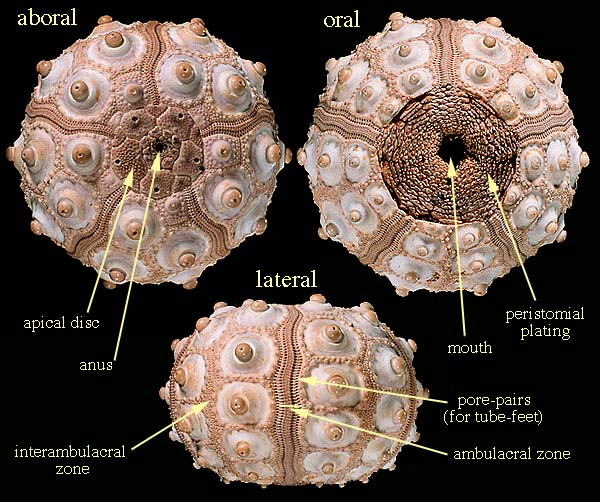
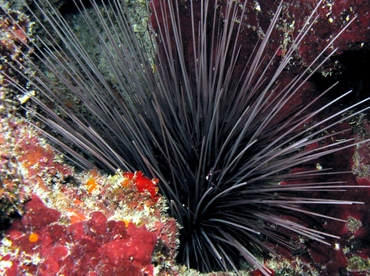
In tropical waters, urchins play important roles in controlling algae growth on coral reefs. The urchins scrape off young algal films before the algae has a chance to grow over and shade the corals. In 1983/84 a massive die-off occurred over the course of a year, and 93% of the Diadema urchins died throughout the Caribbean. The cause of the die-off has yet to be ascertained, though it was likely due to a viral outbreak. Due to the large percentage of population lost, as well as fishing pressure, there has not been a strong comeback of the urchins, and combined with the excess nutrients in the water from growing human populations on Caribbean shores, algal growth on these reefs is damaging the corals and seagrasses.
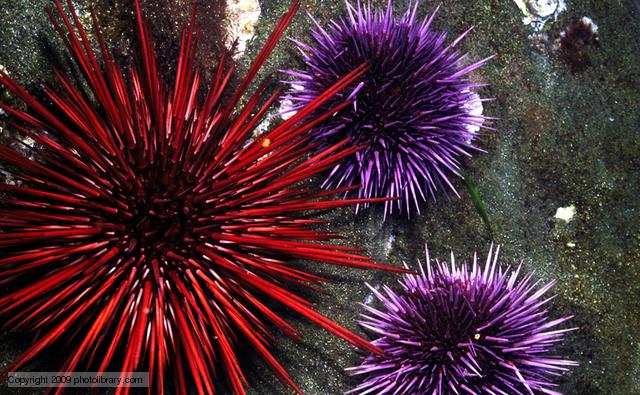
On the other hand, sea urchins that live on rocky coastlines and kelp beds have been known to wipe out whole areas of kelp forest if unchecked. The red and purple urchins on California’s coastline did just that in the late 1990’s because their main predator – the sea otter – was being wiped out by a pod of Orcas (a.k.a. Killer Whales, I just personally don’t care for the name) that had moved into the area. Estes et al. 1998 described it in their landmark paper. When urchins wipe out large algae forests (kelp or other species) these are known as urchin barrens.
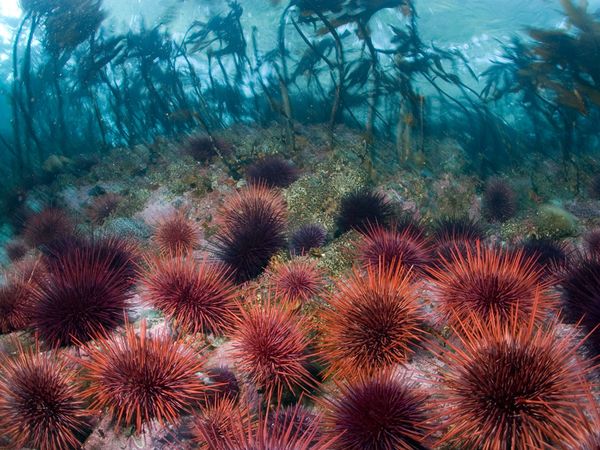
Urchin barrens also occur on European rocky coast lines and in the Mediterranean. In Europe, the edible urchin is a more dominant species, and is currently the main fishery for uni (urchin sex organs) – not too surprising considering the name!
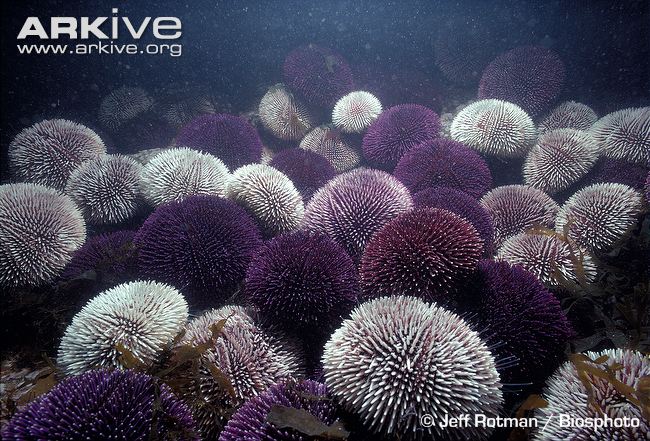
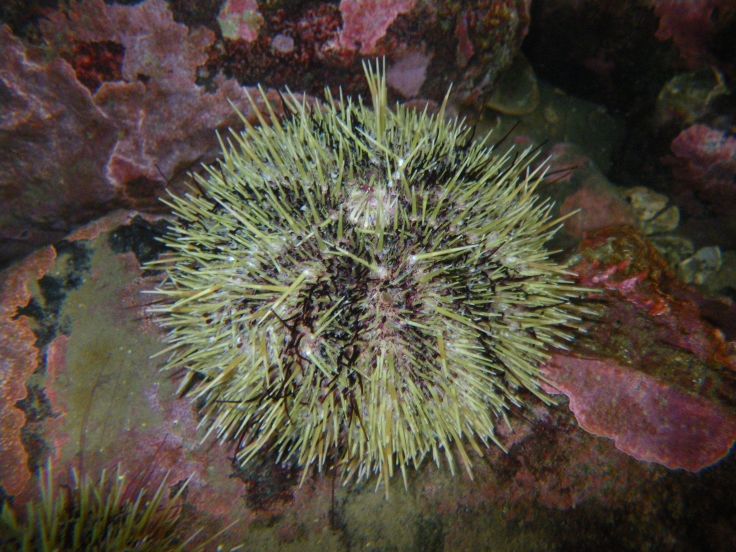
In the deep-sea, urchins are more solitary and range over large areas looking for food. Deep-sea urchins can be far more strange looking than shallow-water counterparts. This urchin has poisonous sacs that prevent fish from making a meal of it. Some shallow-water urchins are poisonous too.
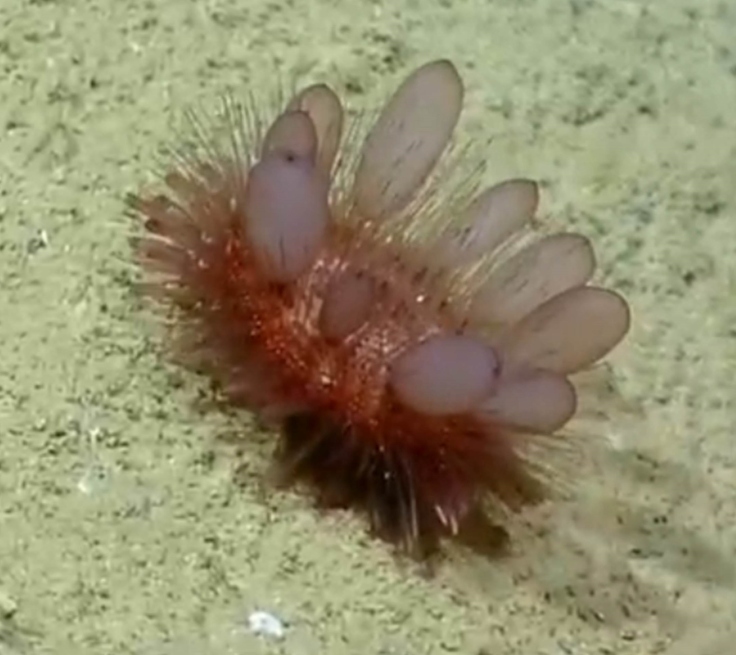
Another urchin has little scoop feet to help it walk along in the fine sediment this seafloor is made of.
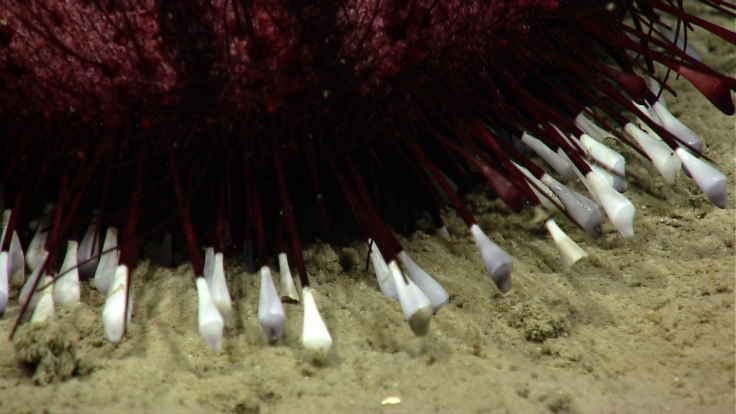
And some deep-sea urchins are just cool looking. Deep-sea scientists still don’t know much about the ecology of urchins – during the last Okeanos dive everyone was surprised and excited to see one munching on an octocoral! It had previously been assumed that they only scavenged on material in sediments rather than active predation. Neat! So the next time you try umi, you can thank these ancient oceanic dweelers for being both cool and tasty!
P.S. A big thanks to Dr. Christopher Mah for his Identifications during the Okeanos cruise. I wuld never known the scientific names otherwise!
P.P.S. Apparently urchins inspire very weird toys
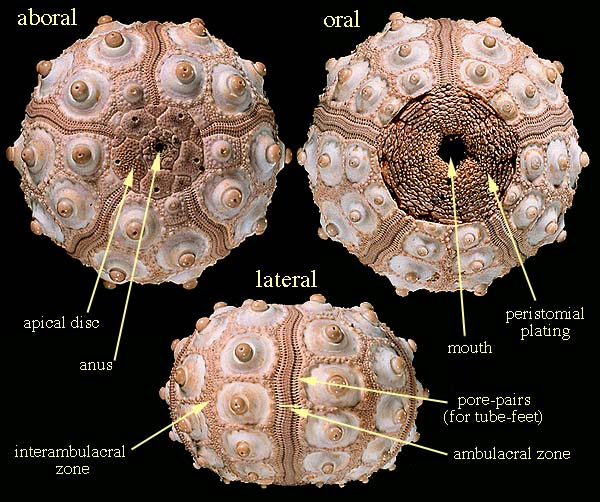
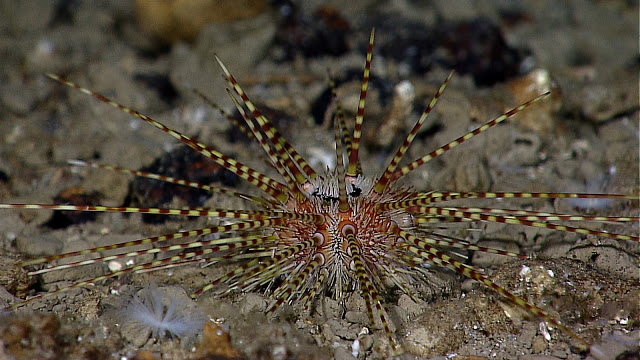
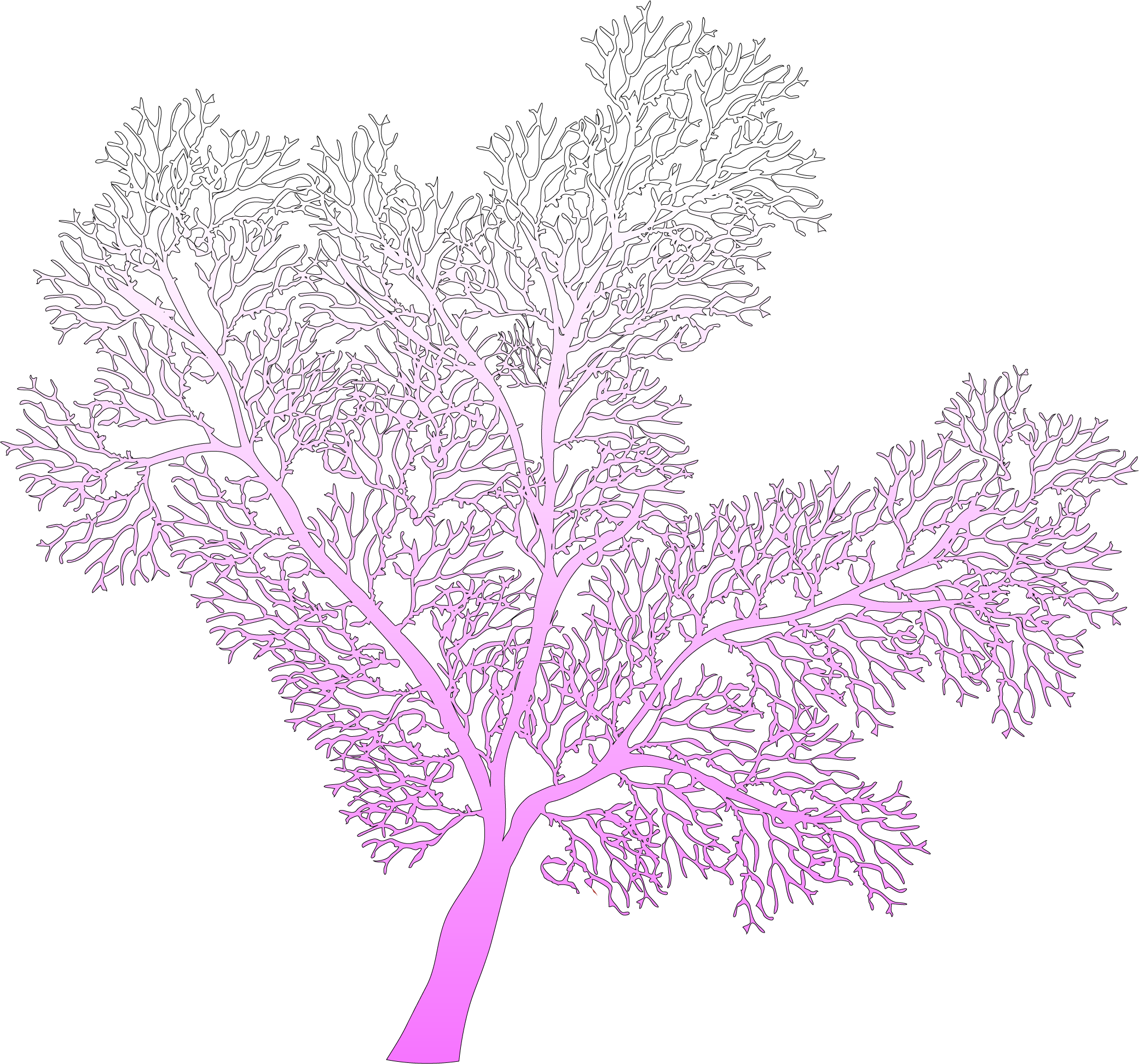
Leave a comment